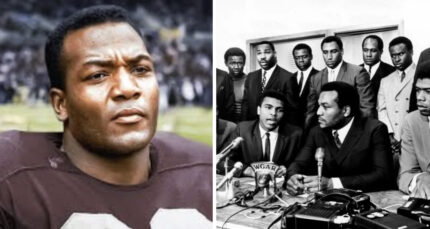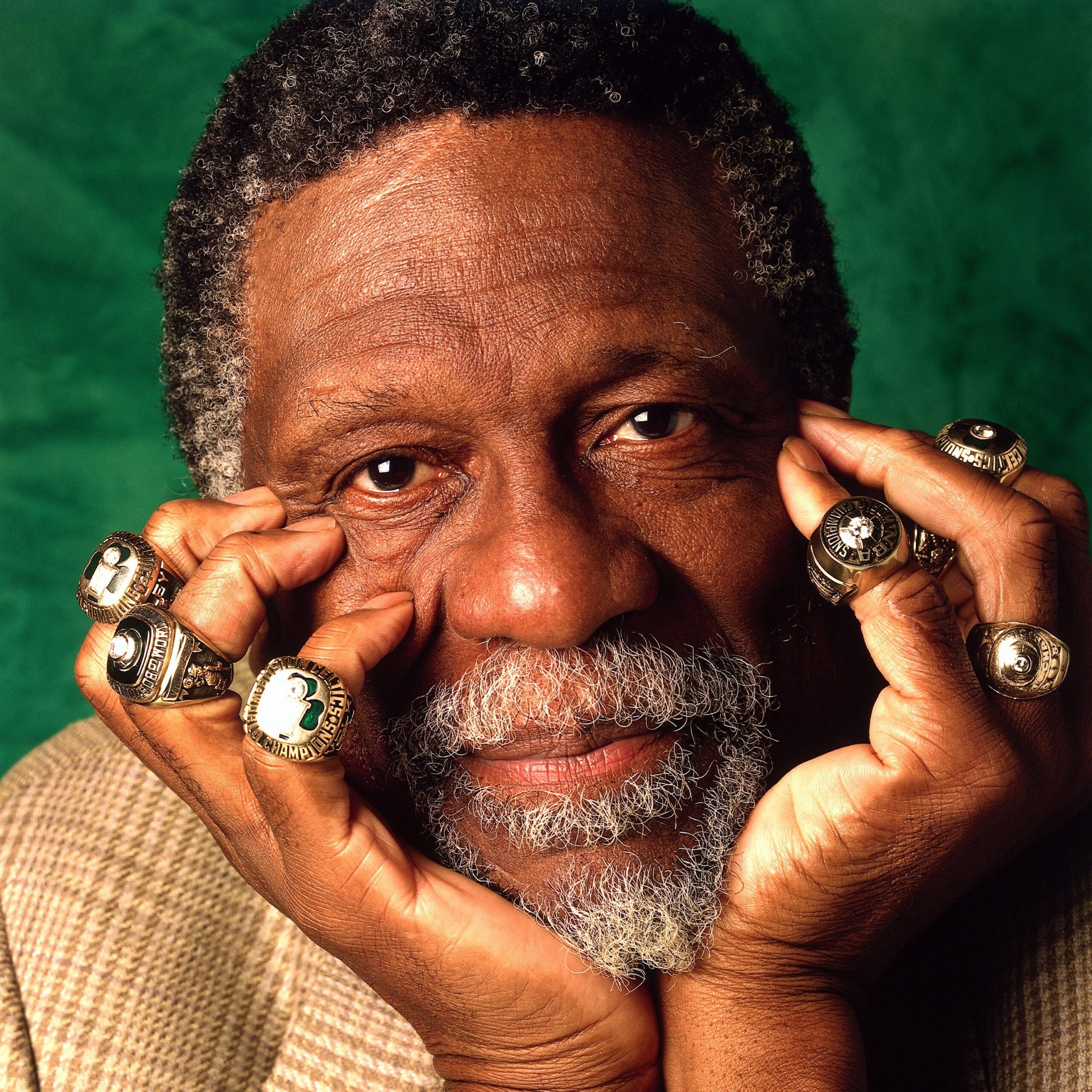We wanted to believe the greatest football player of his day was the man, but his actions historically proved otherwise.
The legacy of Jim Brown is one that has been obscured by black and white photos featuring him standing alongside the likes of Muhammad Ali, Kareem Abdul Jabbar and those other iconic figures who were front and center at the now legendary Cleveland Summit.
Indeed, we looked past many, many transgressions perpetrated by Brown for many reasons, with his extensive domestic violence rap sheet being the most apparent of those transgressions.
For some, he represented a bygone era in which Black men were seemingly much tougher and resolute for the struggle than their latter generation counterparts. Brown harkens back to the glory days of the NFL. Before the “grip it and rip it” modern-day offenses that encourage even mediocre players to sling the ball around the yard 25 plus times a game. (See: Blake Bortles).
Jim Brown had long been mentioned alongside Ali as an individual who was willing to fight the power, whatever the costs or sacrifices. With Jim Brown’s stated allegiance and love towards Donald J Trump, arguably one of the most disliked presidents in over 100 years, Brown drew roars of disapproval from the black body politic.
Jim Brown always implored that the black community should pull itself up by the bootstraps and continue to look inward for a solution to its problems. Through his Ameri-I-Can program, Brown is credited with brokering a respite in the violence between Crips and Bloods in Los Angeles in 1992.
Jim Brown Still Doesn’t Understand, It’s Not An Anthem Protest
Back when it was first revealed that Jim Brown, who along with Muhammad Ali was the face of activism in among professional athletes for years, was a supporter of Donald Trump as well as a fervent critic of banned QB Colin Kaepernick, it was a sickening feeling of dread that rained down upon me.
That hiatus lasted between three months and two years, depending on who’s being asked.
Jim Brown believes himself to be a true patriot and a “real” American. He believes that we shouldn’t denigrate “our” flag nor disparage “our” country. The 82-year-old Brown was born, raised and spent the majority of his life living during a time in which America’s lies had not fully been revealed to its population or the world.
At a time when black people in most of the rest of the country were living under some semblance of a Jim Crow social structure, Brown was playing football at mostly white Manhasset High School in the 50s. The fact that he dominated the competition with an astounding 14.9 yards per carry meant that he was afforded the smoothed out edges of racism simply for being so good.
It’s easy to guess how he was singled out for special treatment because of his abilities, even way back then. Like other athletes who readily chastise black folks at the behest and glee of white folks, Jim Brown likely didn’t actually witness the brunt of racism that a nonathletic black kid would have likely faced.
This is the same guy that criticized both Michael Jordan and Magic Johnson for not doing enough in the black community, despite that fact that the two combined have made many, many black folks millionaires through their respective business endeavors.
I’m reminded of how Charles Barkley has similar talking points as Jim Brown regarding black accountability and bootstraps, and all that mess. Ray Lewis says similar things. When we add up all the common denominators between the aforementioned black athletes, it’s easy to see how their worldview would be skewed. As exceptional athletes, they were insulated from the rabid racism that would have otherwise been perpetrated by members of their relative fanbases.
The Aging of Jim Brown From Social Activist To Republican Minion
Jim Brown was at one time the consensus best football player to ever play in the National Football League but he’s no longer that guy. Once upon a time, he was considered by some to be the prototype of black masculinity.
Recently, “We Matter” author, Syracuse alum and former NBA player Etan Thomas reminded his social media followers that Brown’s initial reason for attending the Cleveland Summit was to convince Muhammad Ali to change his mind and enter the draft.
Baseball’s Jackie Robinson, who criticized Ali for not enlisting, also believed that it was unpatriotic of Ali. However, at least he kept his stance and didn’t crossover to save face. Many of these old-school athletes would be just like Jim Brown if they were still alive.
They’d call for compromise in the name of American idealism, completely forgetting that American idealism, for the large part, is what has kept black folks as second-class citizens since 1676, the year of Bacon’s Rebellion in the Virginia Colony.
No matter what legislation is undertaken for black betterment, it is ultimately rolled back or diluted within a generation. Couple that with voter suppression, housing discrimination, employment discrimination, unequal wages, and income, and it’s hard to fathom how anyone could still be using that B.S. bootstrap diatribe.
But, then, I’m reminded that President Barack Obama often did that very same thing. Whenever that tired-ass troupe is trotted out, none are prepared to advise us on what to do when there are no boots with which to attach said bootstraps. That’s when it becomes apparent that they’re simply using black people as a punching bag for political gain, a centuries-old American tradition.
Indeed, the dualism that makes us African and American simultaneously means dueling dialectics ultimately are responsible for convoluting any argument on race and class in America, muddying the truth with pseudo speculation and quasi-scientific semantics that readily blame the oppressed for the entirety of their station in life.
Within this paradigm, one in which these athletes of African descent ultimately owe their riches and livelihood to white males, it must be difficult to call a spade, a spade, or a racist, a racist. At some point, they related more to the white males that put them on than the people and culture that birthed them.


